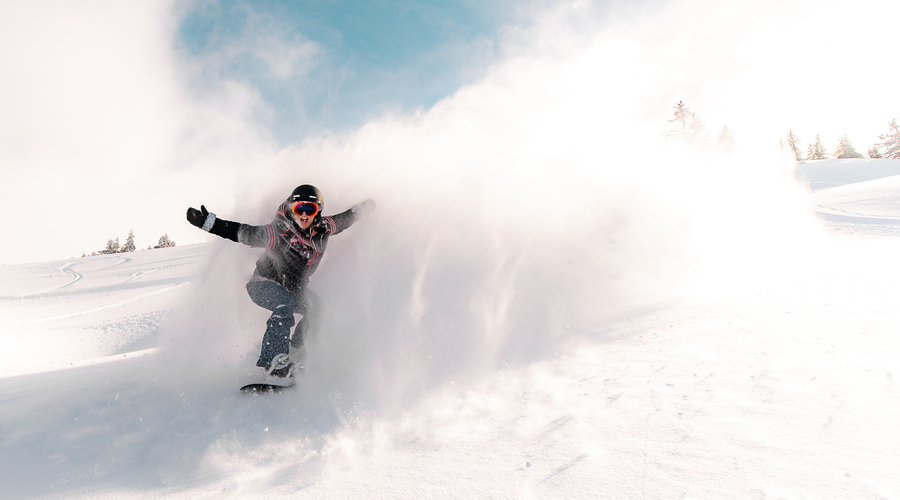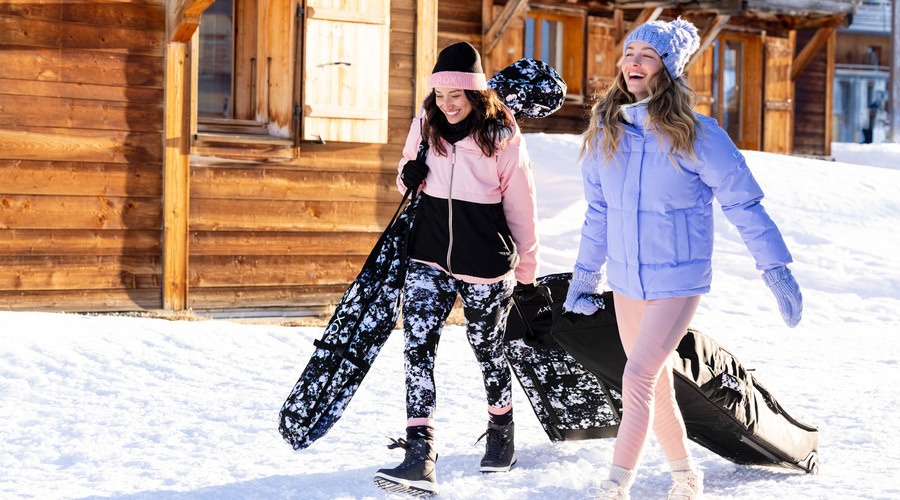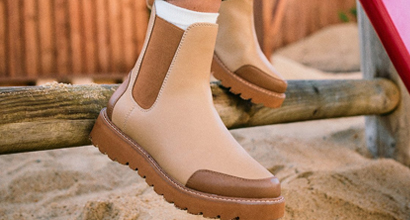-
Login / Register
ROXY GIRL CLUB
Free shipping & returns for members
How To Choose Waterproof Ratings for Clothing

Whether you’ve just bought a new jacket, pants, vest or even backpack, you want a clear picture of how much moisture your new gear can withstand. Waterproof rating scales help you understand how water-resistant your items are and how to care for them. In this article, we’ll go over the different types of waterproof levels and how to choose the right rating to meet your needs.
Understanding Water Resistance
Is water resistant the same as waterproof? What does ‘water resistant’ mean?
What does ‘water resistant’ mean? Water resistance is not the same thing as waterproof. Waterproof means your gear creates a total barrier between you and any moisture on the surface of your garment – but water resistance simply gauges a garment’s ability to repel water from its surface.
Tightly woven materials such as polyester and nylon can provide more resistance than breathable cotton but they won’t keep water out entirely. On the other hand, waterproof materials provide an impermeable barrier, ensuring complete protection even in heavy rain. An additional advantage of water resistance is breathability—allowing moisture and heat to escape, maintaining comfort during activities. While waterproof items excel in extreme wet conditions, water-resistant gear offers versatility, balancing protection with breathability for various outdoor activities.
So while your gear might be water-resistant, that doesn’t mean it is waterproof. And this is where Waterproof Ratings come in: a high rating of 20k+ means you have a water resistant fabric that is virtually waterproof.
When it comes to your clothing, look for high millimetre ratings or for materials like GORE-TEX®, which provide a strong moisture barrier. If you are wondering how waterproof is gore tex, check out our related article that offers a deeper dive on the whole GORE-TEX® range.
Understanding Waterproof Ratings
Not all types of “waterproofness” are the same. In addition to being waterproof, your gear might be able to withstand other elements or be totally submersible. Waterproof ratings are designed to give you all of the information you need to determine what your gear is capable of.

Factors That Affect Waterproof Ratings
- Material: When buying outdoor clothing, the fabric's ability to remain waterproof will be noted in millimeters. The higher the rating, the better that garment’s ability to keep you dry. Fabric technology like GORE-TEX® provides both breathability and waterproof features.
- Construction: Waterproof clothing often features a construction that aids its ability to keep moisture out. Durable zippers help ensure the gear maintains its seal and won’t bend or chip. Waterproof gear often features heat-treated seams that seal the stitching. Waterproof fabrics are often treated with a coating that will cause water to bead or wick away.
- Environment: Waterproof rating scales indicate how much water a garment can withstand, but environmental factors also affect that rating. Submersion pressure – particularly at significant depths – can cause most water-resistant items to let in moisture.
- Duration: While water-resistant items can withstand moisture with regular use, the longer they remain exposed to water, the more their water-resistant features are tested. Items that are resistant might only handle some splashing, while others can withstand constant rain or snow.
- Care and maintenance: Proper care for your items helps to maintain their ability to withstand water. Washing your waterproof jacket according to the item’s care instructions can help its coating and seams last longer.
What’s a good waterproof rating?
No matter which waterproof rating scale your item uses, a higher number is generally better. Water resistance and waterproofing in clothing is typically noted with a ‘k’, explained in the following section. The most common waterproof rating for outerwear is 5k – 20k, however, the right rating for you really depends on how you intend to use your outerwear.

Understanding Waterproof Ratings for Jackets and Coats
When shopping for outerwear, one crucial factor to consider is the waterproof rating. Whether you encounter the term '10,000 mm waterproof jacket', '10000 waterproof coat', or '10000mm waterproof jacket', these specifications all tell you the same thing. And remember - a 'k' represents a thousand, so a 15k waterproof rating has the same meaning as a 15,000 mm waterproof jacket.
Fabric Waterproof Ratings
Waterproof ratings for clothing are most commonly noted with a number followed by the letter k (representing millimetres) – this number is based on the amount of water pressure the fabric can withstand before it starts to leak. For example, a 10k rating means that the fabric membrane can withstand 10,000 millimetres of water over a 1-inch area before it starts to leak. A general guideline for the levels can be found below.
| Rating | Explanation | Good For |
|---|---|---|
| 0 | Not waterproof and will not keep you dry | Dry weather |
| 1K | Repels rain but is not rainproof | Sprinkling or fog |
| >5k | Rainproof but not under pressure | Light rain or snow |
| 5K – 20k | Dependable waterproofing | Average rain or snow, the most common amount of waterproofing |
| 20K+ | Excellent waterproofing under increased pressures | Heavy rain or snow |
Selecting a jacket with the appropriate waterproof rating is crucial for varying weather conditions. A 10 000 mm waterproof jacket or 15 000 mm waterproof jacket provides reliable coverage during average rain days. For extreme conditions with heavy rain, opt for a high performance 20,000 mm+ jacket. Tailoring your choice to your specific use case ensures optimal performance, keeping you dry and comfortable in diverse weather scenarios.
Remember, these ratings are a crucial factor in ensuring that your outerwear keeps you dry and comfortable in various weather conditions. Be sure to check the product specifications and choose the waterproof rating that aligns with your specific needs.

Tips for Keeping Waterproof Clothing in Good Condition
You can extend your gear’s ability to stay waterproof with some TLC. Following the manufacturer’s washing instructions ensures you are giving your gear the best possible care. Washing your waterproof articles on a cool water setting helps prevent damage to seams, zippers, and coatings that are designed to keep you dry. After washing, tumble drying on a low heat reactivates the DWR treatment on technical waterproof pieces. Careful storage – hanging whenever possible, laying flat, avoiding prolonged folding – helps keep the structure of the garment in its best condition. For more information, check out our dedicated article on “How To Care for Snow Clothing”.
Waterproof ratings are designed to give you the information you need to choose the right gear for your next adventure. Consider the daily use of your gear and the context for each rating type to help you understand if a water-resistant fabric will be enough or if you need it to be waterproof.
SHOP WINTER JACKETS SHOP SNOW JACKETS







